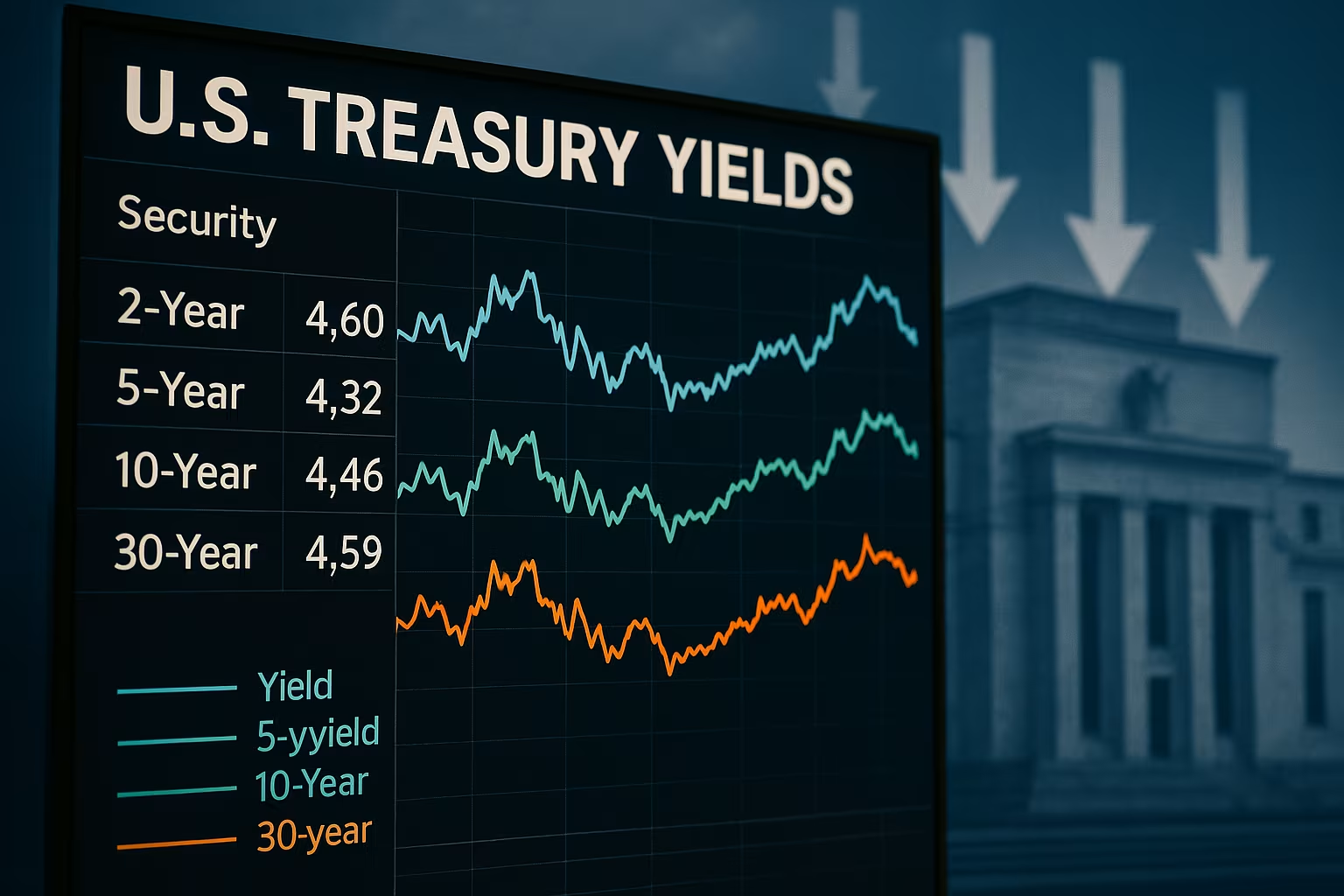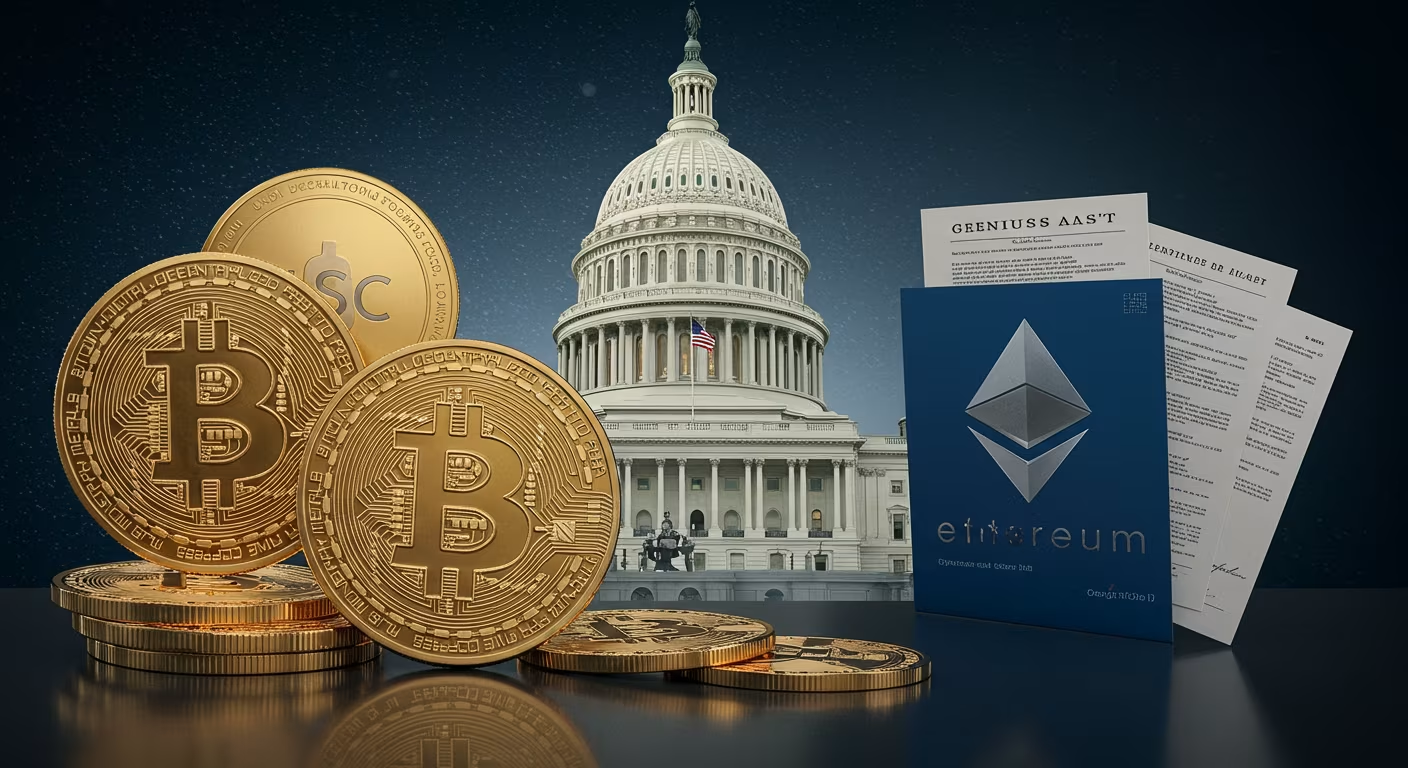U.S. Treasury markets are gaining momentum as investors grow increasingly confident that the Federal Reserve will move forward with a rate cut in September. Despite recent economic data showing mixed signals on inflation and employment, traders are holding firm to the belief that monetary easing is coming soon. This conviction has pushed Treasury prices higher, reinforcing a narrative that the Fed is on the cusp of shifting policy after its most aggressive tightening cycle in decades.
Yields Edge Higher While Traders Price in Dovish Moves
The bond market remains a key barometer for Federal Reserve expectations. Yields on 10-year Treasuries hovered near the mid-4 percent range, while the two-year yield—closely tied to policy outlook—edged higher but stayed well below levels seen earlier this year. Such movements underscore that markets are discounting near-term volatility in favor of a clear path toward lower borrowing costs. Futures trading shows a strong probability of a September rate cut, with many participants convinced the Fed will opt for at least a 25-basis-point reduction. Some analysts even believe a more aggressive 50-basis-point move could be on the table, particularly if incoming data continues to highlight slowing economic momentum.
Inflation Trends Add to the Case for Easing
July’s inflation report gave traders fresh conviction that rate cuts are warranted. Headline inflation rose modestly, while core inflation—excluding volatile categories such as food and energy—remained tame. The numbers suggest that price pressures are cooling after a period of stubborn stickiness, alleviating fears that inflation could once again flare up. Still, risks remain. Tariffs, supply chain adjustments, and higher energy costs could reignite upward price momentum. But for now, markets are interpreting the data as supportive of a dovish pivot from the Fed, especially with core inflation trending toward the central bank’s longer-term target.
Weak Jobs Data Reinforces Market Belief
Perhaps the strongest argument for easing lies in the labor market. Recent job reports showed hiring slowing more sharply than expected, with employment growth far below previous months. Wage pressures are also moderating, reducing fears of a wage-price spiral that could complicate policy decisions. For investors, softening labor conditions send a clear signal: the economy is cooling enough to give the Fed room to shift policy without appearing reckless. This backdrop makes September a logical point for the first cut in the cycle, especially if the Fed wishes to front-load support before economic weakness deepens further.
Bond Market Reaction: A Pre-Cut Rally
The bond market has a long history of anticipating Fed policy shifts. Short-term Treasury yields often decline in the run-up to a rate cut, while longer-dated yields respond more variably depending on inflation expectations and fiscal dynamics. In recent weeks, shorter-maturity Treasuries have rallied strongly as traders position portfolios for easing. Longer-dated bonds, however, remain influenced by broader forces such as government borrowing levels and long-term inflation expectations. As a result, the yield curve—an indicator of future growth and recession risk—has shown signs of steepening, reflecting the divergence between near-term policy bets and structural challenges in the economy.
Policy Signals from Washington
Comments from senior policymakers have added momentum to market bets. Recent calls for a meaningful rate cut in September have bolstered investor sentiment, fueling rallies across both bond and equity markets. Such signals suggest that officials are increasingly open to the idea that restrictive policy settings are no longer necessary to tame inflation and may in fact pose risks to growth. That said, a larger-than-expected cut could be interpreted as a sign of panic unless carefully communicated. This makes the upcoming Jackson Hole symposium and subsequent Federal Reserve meeting crucial moments for clarifying the path forward.
Longer-Term Constraints and Risks
Even if the Fed delivers the expected September cut, longer-term dynamics could temper the impact. Elevated government borrowing needs, coupled with structural inflation risks from tariffs and global supply chain realignments, may keep long-term Treasury yields from falling significantly. This means investors could face a landscape where short-term yields decline sharply while long-term rates remain elevated—a scenario that complicates portfolio strategy. Moreover, an aggressive rate-cutting cycle could reignite asset bubbles in equities and housing, putting the Fed in a delicate balancing act between supporting growth and avoiding new financial instability.
The Road Ahead
In the weeks leading up to September, investors will be watching several key developments: Jackson Hole Symposium: Fed Chair Jerome Powell’s speech may hint at the pace and scale of cuts. Upcoming Inflation Data: A softer trend would validate market bets, while an unexpected rise could shift expectations. Labor Market Reports: Weak job creation and slowing wage growth would further support easing. Treasury Issuance Plans: Heavy government borrowing could offset bond market rallies, especially at the long end of the curve. For now, the consensus is clear: markets are positioned for easing, and Treasuries are benefiting as investors lean into expectations of a September rate cut. But the final outcome depends on how data unfolds—and whether the Fed can manage the delicate balance between easing financial conditions and maintaining credibility.





